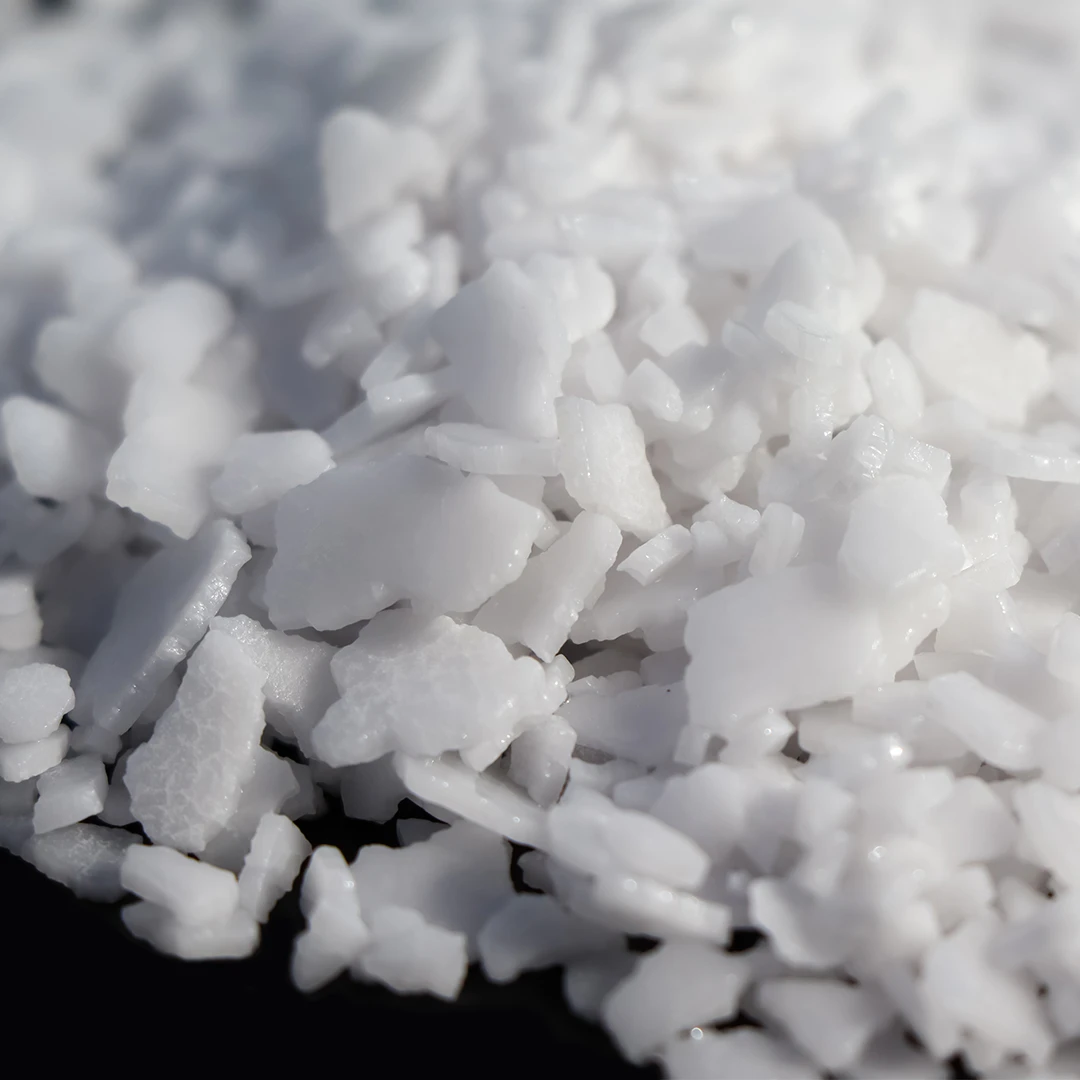Free Shipping Over R750 & under 25 kg Shop Now

Pickup available at Cape Town
Usually ready in 24 hours
Sodium Hydroxide, also known as caustic soda or lye, is a highly caustic and corrosive white solid inorganic compound (NaOH). It is typically available in pellet, flake, or granular form and dissolves readily in water to produce a strongly alkaline solution. Sodium hydroxide is a key ingredient in many industrial and household applications, particularly for soap making, cleaning products, and chemical manufacturing.
Powerful Cleaning Agent: Sodium hydroxide effectively removes grease, oils, and fats from surfaces, making it valuable in cleaning products.
Soap and Detergent Production: It plays a critical role in saponification, converting fats and oils into soap.
pH Regulation: Used to adjust the pH of chemical formulations in various industries.
Versatile Industrial Chemical: Employed in a wide range of processes, including the manufacture of paper, textiles, and chemicals.
Soap Making: Essential in the cold-process and hot-process methods of soap production. It reacts with fats and oils to produce soap and glycerin.
Drain Cleaning: Used in powerful drain cleaners to dissolve blockages caused by grease, hair, and organic matter.
Chemical Manufacturing: Used in the production of bleach (sodium hypochlorite), detergents, and synthetic textiles.
Water Treatment: Helps regulate pH levels in water treatment facilities.
Household Cleaning Products: Found in some oven and drain cleaners due to its ability to break down stubborn grime.
Appearance: White, crystalline solid in pellets, flakes, or granules.
Odour: Odourless.
Molecular Formula: NaOH.
Solubility: Highly soluble in water, producing an exothermic reaction (heat release).
pH (1% solution): 13-14 (strongly alkaline).
Melting Point: 318°C.
Boiling Point: 1,388°C.
Density: 2.13 g/cm³.
Highly Corrosive: Sodium hydroxide can cause severe burns to the skin and eyes on contact. Always handle with protective gear (gloves, goggles, etc.).
Harmful if Ingested or Inhaled: Ingesting even small amounts can cause serious injury, and inhaling dust or fumes can irritate the respiratory tract.
Heat Generation: Mixing with water generates a large amount of heat, which can cause splattering and burns if not handled carefully.
Environmental Hazard: Sodium hydroxide can be harmful to aquatic life in large concentrations.
Conditions: Store in a tightly sealed container, in a cool, dry, well-ventilated area, away from moisture, acids, and incompatible materials (e.g., aluminum).
Safety Measures: Keep away from children and pets. Ensure proper labeling and follow local regulations for hazardous materials storage.
Container: Use corrosion-resistant containers, such as those made from certain plastics or glass, as sodium hydroxide can corrode metal.

Sodium Hydroxide, also known as caustic soda or lye, is a highly caustic and corrosive white solid inorganic compound (NaOH). It is typically available in pellet, flake, or granular form and dissolves readily in water to produce a strongly alkaline solution. Sodium hydroxide is a key ingredient in many industrial and household applications, particularly for soap making, cleaning products, and chemical manufacturing.
Powerful Cleaning Agent: Sodium hydroxide effectively removes grease, oils, and fats from surfaces, making it valuable in cleaning products.
Soap and Detergent Production: It plays a critical role in saponification, converting fats and oils into soap.
pH Regulation: Used to adjust the pH of chemical formulations in various industries.
Versatile Industrial Chemical: Employed in a wide range of processes, including the manufacture of paper, textiles, and chemicals.
Soap Making: Essential in the cold-process and hot-process methods of soap production. It reacts with fats and oils to produce soap and glycerin.
Drain Cleaning: Used in powerful drain cleaners to dissolve blockages caused by grease, hair, and organic matter.
Chemical Manufacturing: Used in the production of bleach (sodium hypochlorite), detergents, and synthetic textiles.
Water Treatment: Helps regulate pH levels in water treatment facilities.
Household Cleaning Products: Found in some oven and drain cleaners due to its ability to break down stubborn grime.
Appearance: White, crystalline solid in pellets, flakes, or granules.
Odour: Odourless.
Molecular Formula: NaOH.
Solubility: Highly soluble in water, producing an exothermic reaction (heat release).
pH (1% solution): 13-14 (strongly alkaline).
Melting Point: 318°C.
Boiling Point: 1,388°C.
Density: 2.13 g/cm³.
Highly Corrosive: Sodium hydroxide can cause severe burns to the skin and eyes on contact. Always handle with protective gear (gloves, goggles, etc.).
Harmful if Ingested or Inhaled: Ingesting even small amounts can cause serious injury, and inhaling dust or fumes can irritate the respiratory tract.
Heat Generation: Mixing with water generates a large amount of heat, which can cause splattering and burns if not handled carefully.
Environmental Hazard: Sodium hydroxide can be harmful to aquatic life in large concentrations.
Conditions: Store in a tightly sealed container, in a cool, dry, well-ventilated area, away from moisture, acids, and incompatible materials (e.g., aluminum).
Safety Measures: Keep away from children and pets. Ensure proper labeling and follow local regulations for hazardous materials storage.
Container: Use corrosion-resistant containers, such as those made from certain plastics or glass, as sodium hydroxide can corrode metal.
Size
Size: 1kg
Pickup available, usually ready in 24 hours
The Reserve 2 Business Park Unit 12
Capricorn Way Brackenfell
Cape Town
Western Cape
7560
South Africa
Pickup available, usually ready in 24 hours
2 Magda Road
Highveld Techno Park
Centurion
Gauteng
0169
South Africa